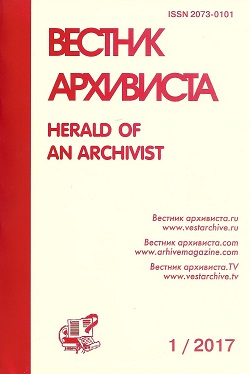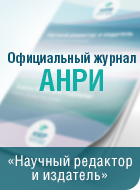Secret postal telegram on personnel purge of communication organizations and institutions in Siberia. August 17, 1928.



Document publication
doi 10.28995/2073-0101-2024-3-849-863
For citation
Sushko, Alexey V., Petin, Dmitry I. (2024), Secret postal telegram on personnel purge of organizations and institutions of communication in Siberia. August 17, 1928, Herald of an Archivist, № 3, pp. 849-863, doi 10.28995/2073-0101-2024-3-849-863
Sushko, Alexey V., Petin, Dmitry I., Omsk State Technical University, Omsk, Russia
Secret postal telegram on personnel purge of communication organizations and institutions in Siberia. August 17, 1928.
Abstract
This paper is a source study of a circular postal telegram on the need to purge “politically unreliable” and “harmful” persons from the organizations and institutions of communication in Siberia. The document was sent to the heads of the Siberian regional subdivisions of the OGPU bodies, the management of organizations and communication institutions in Siberia in the second half of August 1928. The published source makes it possible to reveal the procedure of “getting rid” of “former people” and other persons who were seen as unreliable for the communist state from the point of view of the Soviet state security agencies. Based on the study of the postal telegram stored in the State Archive of the Novosibirsk Region, it is substantiated that, despite its interdepartmental nature, the document was prepared by the officers of the OGPU for Siberian Krai, who were responsible for ensuring the security of strategically important for the state communications agencies and the implementation of state policy with regard to “former people” and other unreliable persons. The theoretical basis of the work is represented by a combination of source and system methods. The source study method allowed us to study the published document in connection with the peculiarities of the era that caused its emergence. The system method allowed us to consider the document as a product of the political regime in the USSR, which increasingly ignored the existing legislation and gradually expanded the practice and scale of political repression. The study determines the scientific significance of the published historical source; according to the authors, it consists in the fact that the postal telegram sheds light on significant aspects of the history of the Soviet state and its socio-political life in that period. First of all, the source testifies to the forms and methods of work of the Soviet secret services, which were a special part of the party apparatus in the late 1920s, already confidently dictating their rules of conduct to representatives of Soviet organizations and institutions. In addition, this document demonstrates the process of degradation of Soviet law enforcement practice, which was caused by the activities of officials described in the document, this and similar instructions that created a system of ignoring the current legislation by the party-state apparatus and special services. The work may be of interest to researchers studying, first of all, the Soviet society of the Stalinist era, personnel purges, the activities of the Soviet security services and the existence of “former people” in the USSR.
Keywords
Soviet society, special services, state security agencies, OGPU, communication institutions, purges, “former people”, Siberia.
Download the article: sushko_petin_doi
References
Anfertiev, I. A. (2022), Modernization of Soviet Russia in the 1920s-1930s: programs of transformations of the RCP(b)-VKP(b) as instruments of the struggle for power, INFRA-M, Moscow, Russia, 593 p.
Anfertiev, I. A. (2017), Stalin's rise to power and strategic plans of the ruling RCP(b)-VKP(b) in the sphere of social transformations, Vestnik of Russian State University, Series: History, Philology, Cultural Studies, Oriental Studies, № 8, pp. 82-91.
Anfertiev, I. A. (2016), Repressive policy of the Bolsheviks in relation to the SRs: the peasant question in the conditions of the implementation of the Soviet social project in 1919 - early 1920s on the documents of the Central Committee and the Central Control Commission of the RCP(b)-VKP(b). IN: Problems and trends in the development of socio-cultural space of Russia: history and modernity: III international scientific and practical conference, April 22-23, 2016, Bryansk BGITU, Bryansk, Russia, pp. 99-106.
Anfertiev, I. A. (2015), The leadership of the RCP(b) in the transition to a new economic policy: the Central Control Commission and “purges” of party cadres, New Historical Vestnik, № 3, pp. 65-78.
Zdanovich, A. A. (2018), To the issue of studying the history of the VChK-NKVD at the present stage: polemical notes, Clio, № 3, pp. 196-205.
Zdanovich, A. A. (2021), “Conceptually we should write not about how we won, but about how we fought on a long way and through losses came to the Great Victory...”, Omsk Scientific Bulletin, Series: Society, History, Modernity, vol. 6, № 4, pp. 55-61.
Krasilnikov, S. A. (2022), History and memory in the context of political interests, Historical Courier, № 1, pp. 9-21.
Moiseev, V. V. (2023), Way long in a century: from the bulletin “Sibarkhiv” of the 1920s to the scientific and historical journal of Siberian archivists “Siberian Archive”, History and Archives, vol. 5, № 3, pp. 105-122.
Moiseev, V. V., Zakharov, K. V. (2023), Siberian archives in the modern information society, History and Archives, vol. 5, № 2, pp. 101-115.
Petin, D. I., Stelmak, M. M., Sushko, A. V. (2023), “Zolotopogonniki” in Soviet Russia: a collective social portrait of former white officers in the 1920s (on the example of Omsk), Bulletin of Tomsk State University, № 486, pp.165-175.
Plekhanov, A. M. (2018), “It seems that we are educating a young generation that ‘does not remember its kinship’...”, Omsk Scientific Bulletin, Series: Society, History, Modernity, № 1, pp. 7-11.
Teplyakov, A. G. (2008), Machina Terror: OGPU-NKVD of Siberia in 1929-1941, Novy Chronograf; AIRO-XXI, Moscow, Russia, 608 p.
Teplyakov, A. G. (2018). Activity of the VChK-GPU-OGPU-NKVD Bodies (1917-1941): historiographic and source study aspects, NSUEU, Novosibirsk, Russia, 434 p.
Gregory, P. R. (2009), Terror by Quota: State Security from Lenin to Stalin: an Archival Study, vol. VIII, Yale University Press, New Haven, 346 p.
Lovell, S. (2009), The Soviet Union: a very short introduction, vol. XIV, Oxford Univ. Press, Oxford, 154 p.
Basingstoke, Ilic M. (ed.) (2006), Stalin’s Terror Revisited, vol. XVII, Palgrave Macmillan, New York, 236 p.
Harris, J. (ed.) (2013), The anatomy of terror: political violence under Stalin, Oxford University press, Oxford, 333 р.
Alexopoulos, G., Hessler, J., Tomoff, K. (ed.) (2011), Writing the Stalin era: Sheila Fitzpatrick and Soviet historiography, Palgrave Macmillan, New York, 246 р.
About the authors
Sushko Alexey V., Doctor of Historical Sciences, Omsk State Technical University, Department of History, Philosophy and Social Communications, Professor, Omsk, Russia, 8-962-057-13-27, This e-mail address is being protected from spambots. You need JavaScript enabled to view it
Petin Dmitry I., Ph.D. historical sciences, Omsk State Technical University, Department of History, Philosophy and Social Communications, Associate Professor, Omsk, Russia, 8-950-333-56-81, This e-mail address is being protected from spambots. You need JavaScript enabled to view it
The article was received in the editorial office on 19.01.2024, recommended for publication on 20.06.2024.











